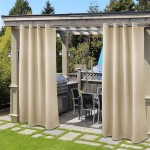Outdoor Landscape Lighting Design Ideas
Outdoor landscape lighting design is a multifaceted discipline that focuses on enhancing the aesthetic appeal, functionality, and security of exterior spaces surrounding a property. Thoughtful implementation of landscape lighting can transform a mundane yard into a captivating oasis after dusk, extending the usability of outdoor areas and providing a welcoming ambiance. The key to successful landscape lighting lies in understanding the principles of design, selecting appropriate fixtures, and strategically positioning them to achieve the desired effect.
The objectives of landscape lighting extend beyond mere illumination. It is about creating ambiance, highlighting architectural features, improving safety, and deterring potential intruders. A well-designed lighting plan should consider the existing landscape elements, such as trees, shrubs, pathways, and water features, and utilize light to accentuate their beauty and character. Furthermore, efficient landscape lighting contributes to energy conservation and reduces light pollution, promoting responsible environmental stewardship.
Planning and Design Considerations
Effective landscape lighting begins with meticulous planning. This involves assessing the property's architecture, landscape features, and specific needs. A comprehensive site analysis helps identify areas requiring illumination for safety and functionality, as well as spaces that would benefit from a decorative touch. This initial assessment provides a foundation for developing a lighting plan that balances aesthetic appeal with practical considerations.
An essential aspect of landscape lighting design is understanding the different types of lighting techniques. Uplighting, downlighting, path lighting, and spotlighting each serve a unique purpose and contribute to the overall ambiance of the outdoor space. Uplighting, for example, is commonly used to illuminate trees and architectural features, creating a dramatic effect. Downlighting mimics natural moonlight, providing subtle illumination for pathways and seating areas. Path lighting ensures safe passage along walkways, while spotlighting highlights specific landscape elements.
Another crucial element in landscape lighting design is fixture selection. The choice of fixtures depends on the desired aesthetic, the lighting technique employed, and the environmental conditions. Fixtures must be weather-resistant and durable, capable of withstanding exposure to rain, snow, and fluctuating temperatures. Materials such as brass, copper, and stainless steel are commonly used for their longevity and resistance to corrosion. Furthermore, the style of the fixtures should complement the architecture of the house and the overall landscape design.
The color temperature of light bulbs plays a significant role in shaping the mood of the outdoor space. Warm white light (2700K-3000K) creates a cozy and inviting atmosphere, while cool white light (4000K-5000K) provides brighter illumination and enhances the visibility of colors. The selection of color temperature should align with the desired ambiance and the specific application. For example, warm white light is often preferred for seating areas and patios, whereas cool white light may be more appropriate for security lighting.
Finally, energy efficiency is a paramount consideration in modern landscape lighting design. LED lighting technology offers significant energy savings compared to traditional incandescent or halogen bulbs. LED fixtures consume less electricity and have a longer lifespan, reducing energy costs and minimizing the need for frequent replacements. Furthermore, smart lighting systems can be integrated to control lighting schedules and adjust brightness levels, optimizing energy consumption and enhancing convenience.
Effective Lighting Techniques
Implementing various lighting techniques is crucial for achieving a well-balanced and visually appealing landscape lighting design. Each technique serves a unique purpose and contributes to the overall ambiance of the outdoor space. Combining different techniques strategically can create depth, highlight focal points, and enhance the beauty of the landscape.
Uplighting is a versatile technique that involves positioning fixtures at ground level to shine light upwards onto trees, shrubs, or architectural features. This technique creates a dramatic effect, emphasizing the height and texture of these elements. Uplighting can be used to highlight the canopy of a mature tree, the facade of a building, or a decorative sculpture. The angle and intensity of the light can be adjusted to create different effects, from a subtle glow to a bold statement.
Downlighting, also known as moonlighting, involves mounting fixtures high up in trees or on structures to cast light downwards, mimicking the soft, diffused light of the moon. This technique provides gentle illumination for pathways, patios, and other outdoor areas. Downlighting creates a natural and inviting ambiance, enhancing the visibility of the ground without creating harsh shadows. The fixtures used for downlighting should be designed to minimize glare and provide a wide, even distribution of light.
Path lighting is essential for ensuring safe passage along walkways and driveways. Path lights are typically low-level fixtures that illuminate the ground, providing clear visibility and preventing accidents. These fixtures should be spaced appropriately to provide consistent illumination without creating excessive glare. Different styles of path lights are available, ranging from traditional lanterns to modern bollards, allowing homeowners to choose fixtures that complement the overall landscape design.
Spotlighting is used to highlight specific landscape elements, such as water features, sculptures, or specimen plants. Spotlights are typically directional fixtures that focus a beam of light onto a particular object, drawing attention to its unique features. The intensity and color of the light can be adjusted to create different effects, emphasizing the texture, shape, or color of the object. Spotlighting can also be used to create dramatic shadows and add depth to the landscape.
Silhouetting involves positioning a light source behind an object to create a dark outline against a brighter background. This technique is particularly effective for highlighting interesting shapes and textures, such as the branches of a tree or the foliage of a shrub. Silhouetting can add a sense of mystery and intrigue to the landscape, creating a visually striking focal point.
Washing is a technique that involves illuminating a large surface, such as a wall or a fence, with a broad, even light. This technique can be used to create a sense of space and enhance the texture of the surface. Washing is often used to illuminate stone walls, brick facades, or wooden fences, adding warmth and character to the landscape.
Practical Considerations and Maintenance
Beyond aesthetic and technical aspects, several practical considerations are important for successful landscape lighting implementation. These include safety, security, maintenance, and compliance with local regulations. Addressing these factors ensures the longevity, functionality, and safety of the lighting system.
Safety is paramount in landscape lighting design. All electrical components should be installed by a qualified electrician to ensure compliance with safety codes and regulations. Wiring should be buried underground to prevent tripping hazards and protect it from the elements. Low-voltage lighting systems are generally safer than high-voltage systems, reducing the risk of electrical shock. Furthermore, fixtures should be positioned to avoid glare, which can impair visibility and create hazardous conditions.
Security lighting can be integrated into the landscape lighting design to deter potential intruders. Motion-activated lights can be strategically placed around the perimeter of the property to illuminate areas that are vulnerable to intrusion. These lights should be bright enough to provide clear visibility without being overly intrusive or disruptive to neighbors. Security lighting can also be combined with other security measures, such as alarms and surveillance cameras, to enhance the overall security of the property.
Regular maintenance is essential for ensuring the longevity and performance of the landscape lighting system. Fixtures should be cleaned periodically to remove dirt, debris, and insect nests. Bulbs should be replaced as needed to maintain optimal brightness and color temperature. Wiring and connections should be inspected regularly for signs of damage or corrosion. Furthermore, the lighting system should be adjusted seasonally to account for changes in foliage and weather conditions.
Compliance with local regulations is crucial for avoiding fines and ensuring that the lighting system does not create a nuisance for neighbors. Many municipalities have ordinances regarding light pollution, which limit the amount of light that can be emitted from a property. These ordinances may specify maximum light levels, fixture types, and hours of operation. It is important to consult with local authorities and obtain any necessary permits before installing a landscape lighting system.
Finally, consider the impact of landscape lighting on wildlife. Excessive or poorly directed light can disrupt the natural behavior of nocturnal animals and migratory birds. To minimize the impact on wildlife, use shielded fixtures that direct light downwards, avoid over-illumination, and use motion sensors to turn off lights when they are not needed. Furthermore, consider using amber or red-colored lights, which are less disruptive to wildlife than white or blue-colored lights.

28 Backyard Lighting Ideas How To Hang Outdoor String Lights

Outdoor Landscape Lighting Design Tips Ideas Environmental Designs

25 Best Landscape Lighting Ideas And Designs For 2024

Outdoor Landscape Lighting Design Tips Ideas Environmental Designs

How To Choose A Landscape Lighting Design That Fits Your Home

Landscape Lighting For An Outdoors Par Excellence Design Outdoor

25 Budget Friendly Backyard Lighting Ideas Hgtv
Outdoor Lighting Ideas 10 Designs Architecture Design

The Secret To Outdoor Lighting Turney And Electric

11 Hardscaping Lighting Ideas Big Rock Landscaping








